Best AI Tools for Intellectual Property Management in 2025
January 1, 2025


Intellectual Property (IP) is a critical asset for businesses of all sizes. However, managing IP effectively can take time and effort. This is where AI Tools for Intellectual Property Management come into play. By leveraging artificial intelligence, businesses can streamline their IP processes, enhance efficiency, and gain a competitive edge. This blog post will explore how AI transforms IP management, from automated patent searches and trademark monitoring to copyright infringement detection and IP valuation. By utilizing task management software with AI tools for IP management, businesses can streamline their workflows, track progress, and ensure that all aspects of their IP management strategy are effectively executed and monitored.
Artificial intelligence (AI) is revolutionizing how businesses approach IP management. Here are some key ways AI is being leveraged:
AI algorithms can rapidly analyze vast databases of patents, scientific literature, and other relevant information to identify prior art, reducing the time and cost associated with patent searches.
AI can assist in drafting patent applications by analyzing existing patents, identifying key features, and generating concise and accurate claims.
AI-powered tools can continuously monitor online platforms and marketplaces for trademark infringements, enabling faster detection and response.
AI algorithms can analyze images, audio, and video content to identify instances of copyright infringement with high accuracy.
AI models can analyze market trends, competitive landscapes, and other factors to provide more accurate valuations of IP assets.
AI can help identify potential risks associated with IP, such as infringement lawsuits or challenges to patent validity.
These versatile tools power a wide range of IP management applications.
ML models can categorize patents based on their technology, helping organize and search vast patent databases.
ML algorithms can efficiently analyze massive datasets to identify relevant prior art, which is crucial for assessing novelty and patentability.
ML models can compare patent claims to accused products or technologies to identify potential infringement.
NLP excels at analyzing textual information, making it invaluable for IP management.
NLP can extract key information from patent documents, such as claim language, inventor details, and technology keywords.
NLP can analyze contracts, licenses, and other legal documents to identify key terms and clauses related to IP rights.
NLP can analyze news articles, research papers, and other publications to gather insights into competitor activities and emerging technologies.
This area of AI focuses on image and video analysis, offering unique capabilities for IP protection.
Computer vision algorithms can compare images and videos to detect plagiarism or unauthorized use of copyrighted material.
Computer vision can analyze images and videos to identify instances of trademark infringement, such as counterfeit products or unauthorized use of brand logos.
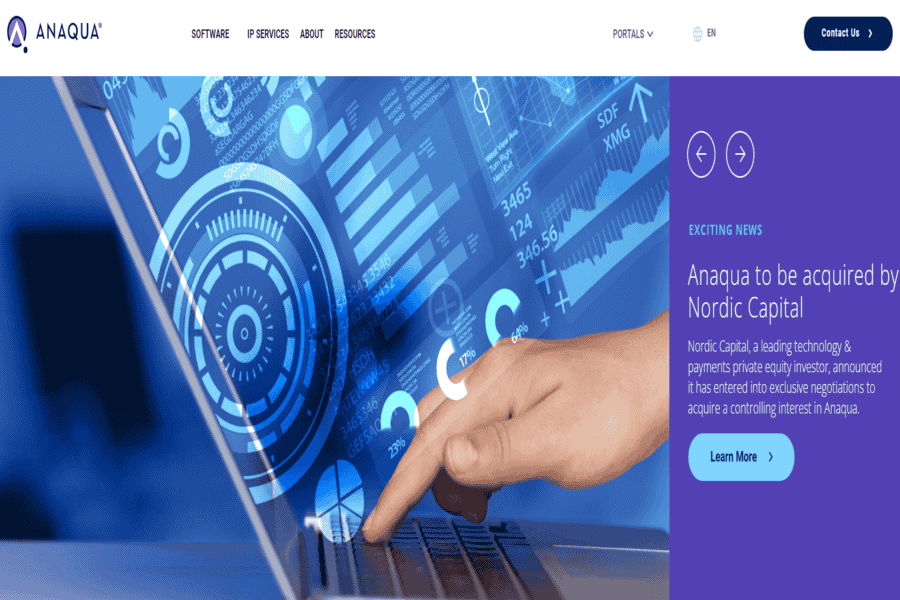
With integrated AI-powered analytics, Anaqua provides a unified platform for managing intellectual property, including patents, trademarks, and copyrights.
Custom pricing based on organization size and requirements.
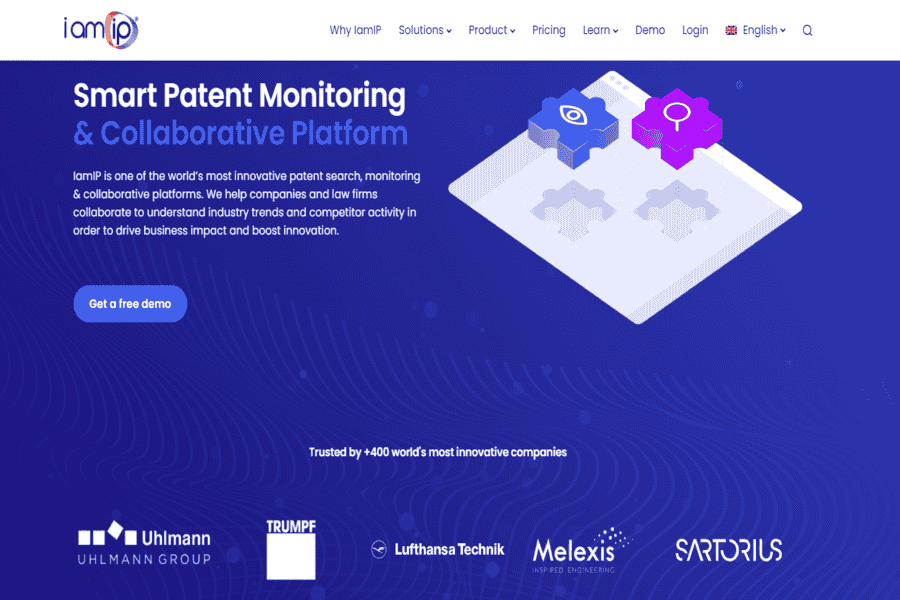
IAMIP simplifies IP portfolio management with AI-powered patent search and monitoring tools, enabling organizations to track innovations and competitors effectively.
Subscription-based pricing; contact IAMIP for details.
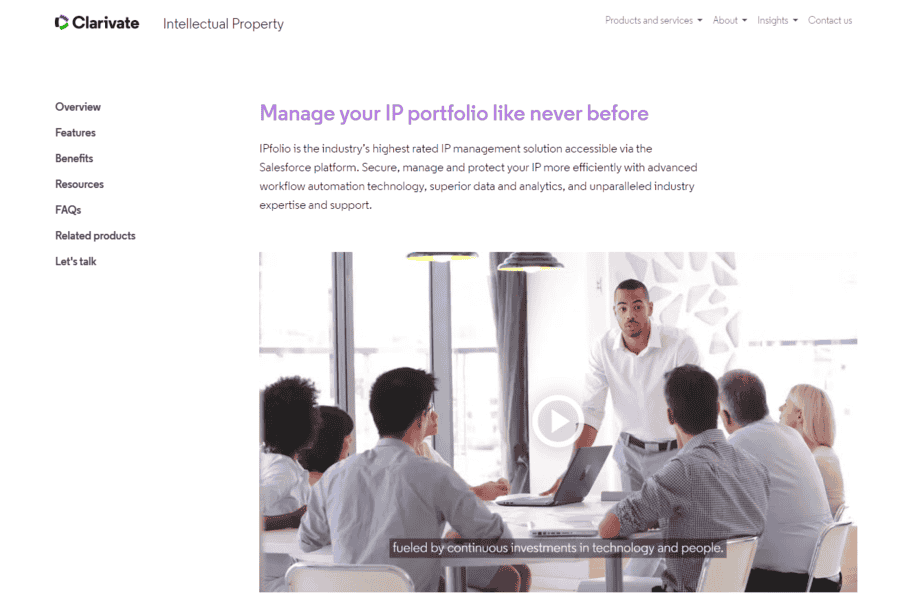
IPfolio is a cloud-based intellectual property management tool designed to help organizations efficiently manage, track, and protect their IP assets.
Custom pricing is based on the number of users and portfolio size.
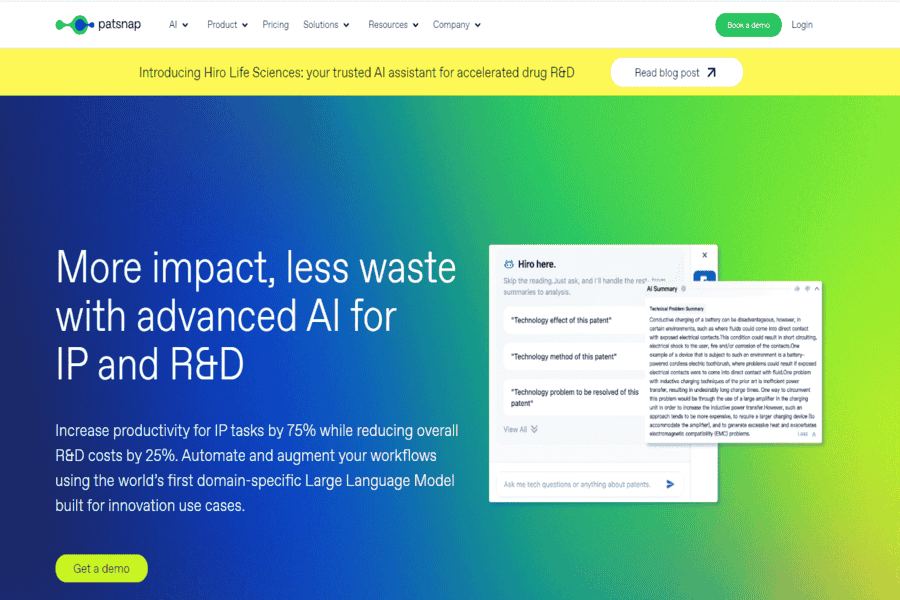
PatSnap leverages AI to provide insights into patents, R&D activities, and competitive intelligence, empowering organizations to make informed IP decisions.
Custom pricing based on feature requirements.
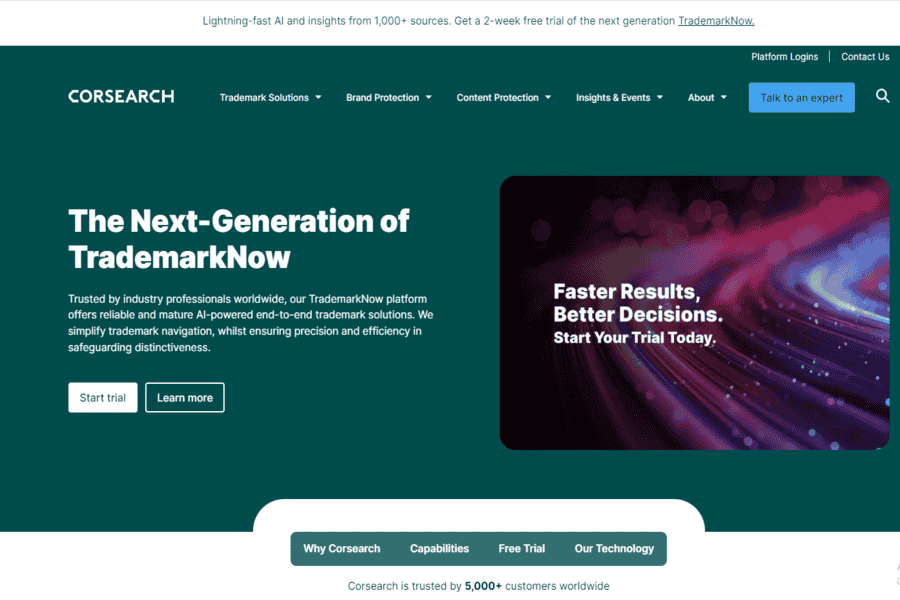
TrademarkNow uses AI to provide fast and accurate trademark search, registration, and monitoring, helping organizations safeguard their brand assets.
Subscription-based; pricing varies based on search volume and features.
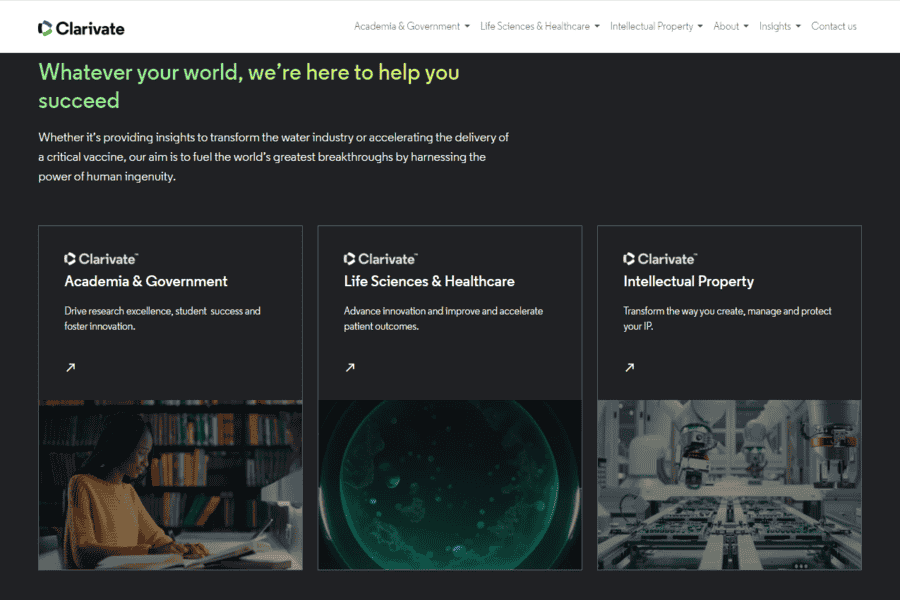
Clarivate Analytics offers an advanced suite of AI-powered tools for managing the IP lifecycle, including patent search, analysis, and portfolio management.
Tailored pricing based on organization needs.
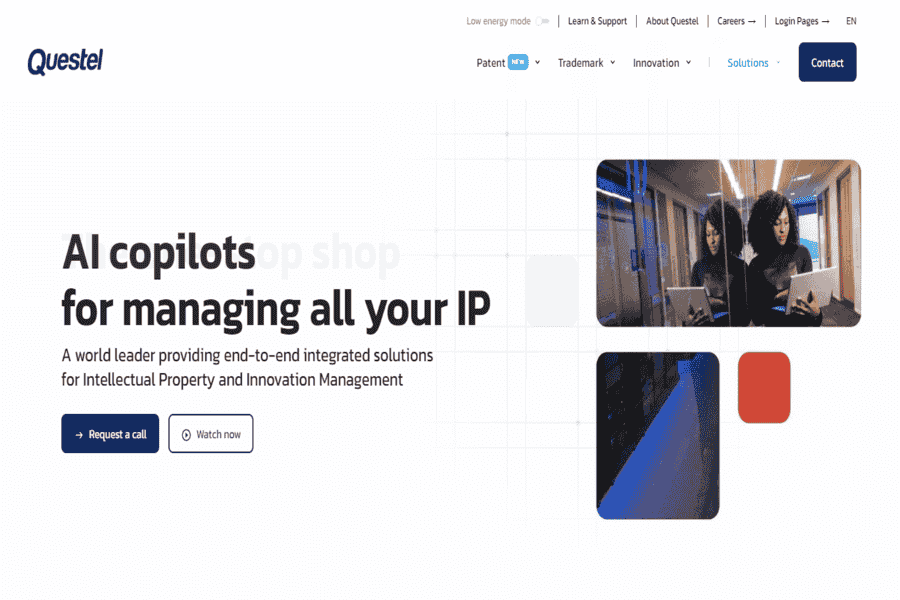
Questel provides an integrated IP management platform with AI-powered solutions for patent search, analytics, and cost management.
Subscription-based pricing; contact Questel for details.

IPwe uses blockchain and AI technologies to simplify patent transactions, manage IP portfolios, and provide valuation insights.
Custom pricing: contact IPwe for more information.
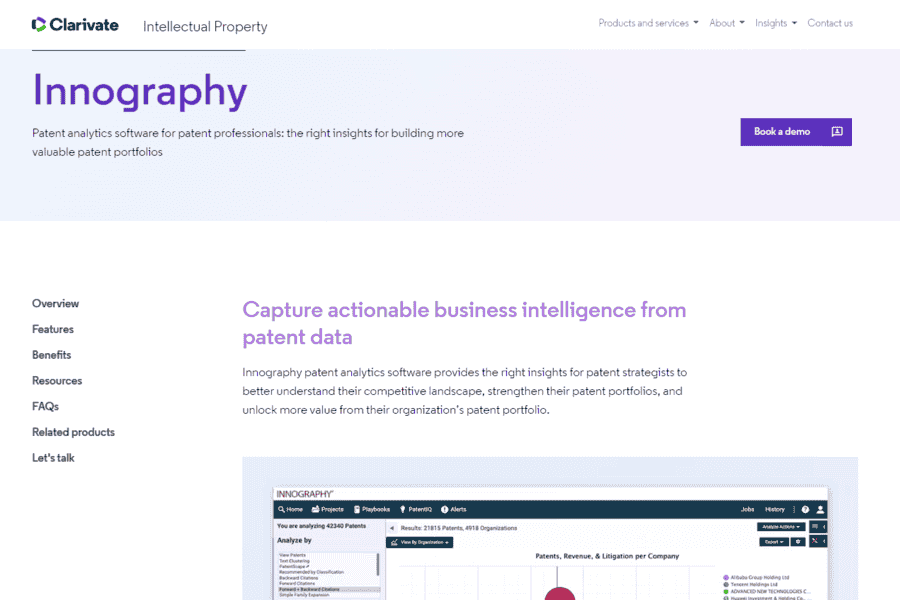
Innography is an AI-driven IP analytics platform that provides actionable insights for portfolio management and competitive analysis.
Contact Innography for pricing details.
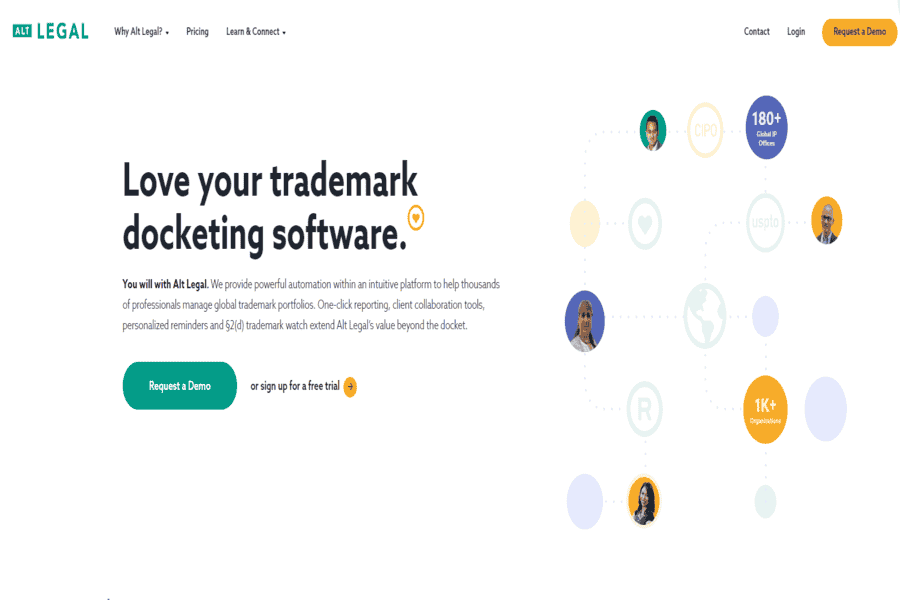
Alt Legal uses AI to automate IP docketing, trademark monitoring, and filing processes, enabling law firms and enterprises to manage IP portfolios seamlessly.
Subscription-based pricing; contact Alt Legal for details.
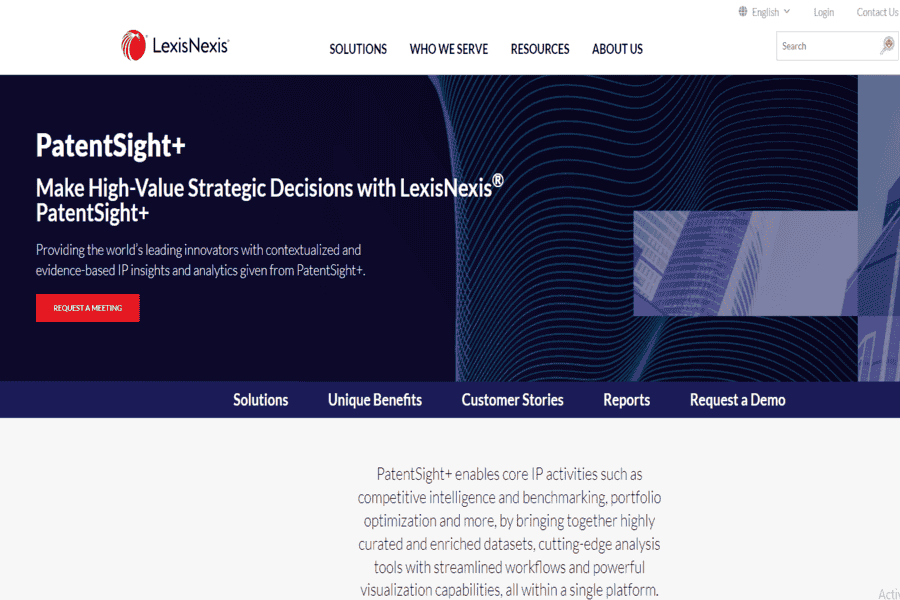
PatentSight provides advanced analytics to evaluate patent portfolios, offering actionable insights for competitive intelligence and strategic decision-making.
Custom pricing based on requirements.
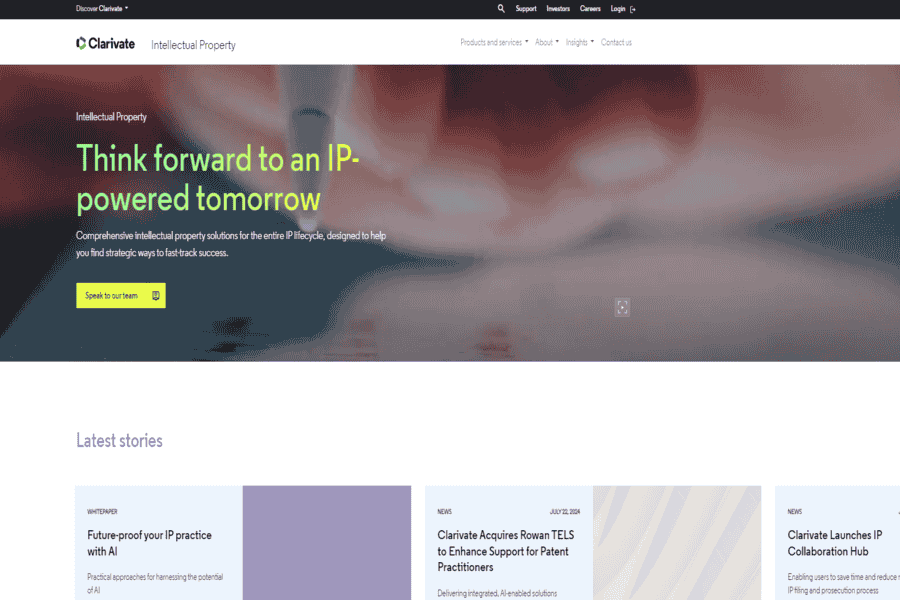
CPA Global offers a full suite of AI-powered IP management tools to simplify patent filing, trademark tracking, and cost management.
Based on subscription and service requirements.
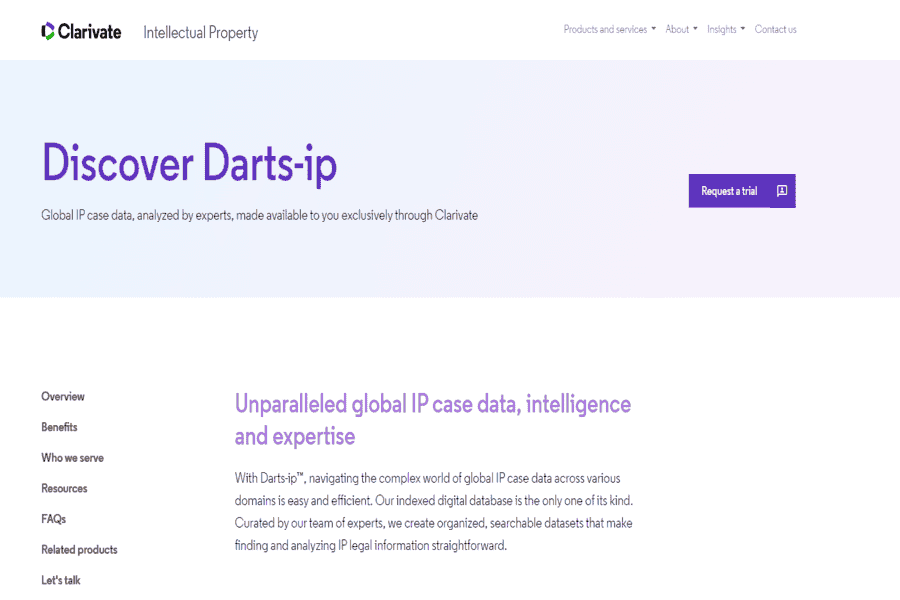
Darts-ip provides AI-powered litigation analytics to help organizations understand IP case outcomes, trends, and legal strategies.
Subscription-based; contact for details.
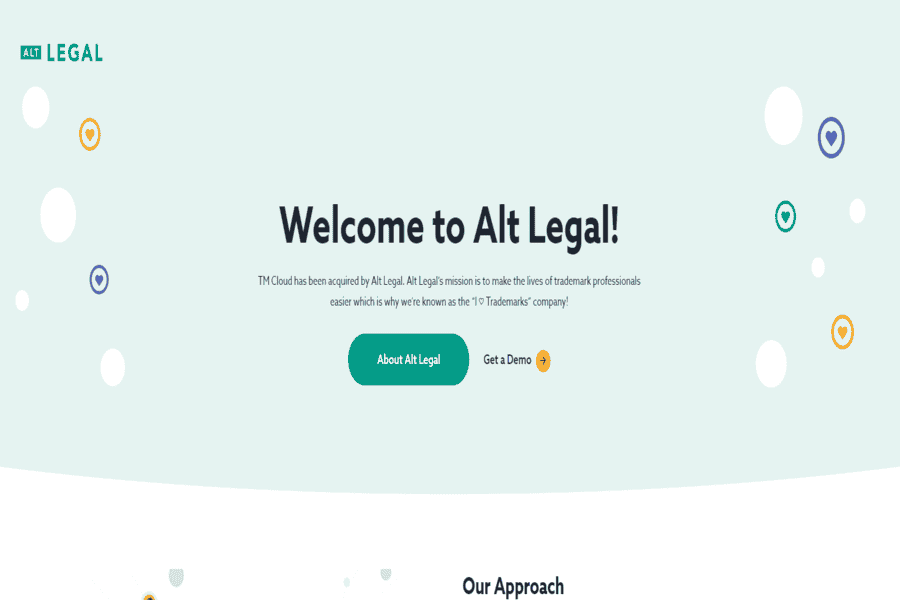
TM Cloud is a platform designed for trademark management, offering AI-driven tools for filing, tracking, and monitoring trademarks.
Subscription plans; pricing available upon request.
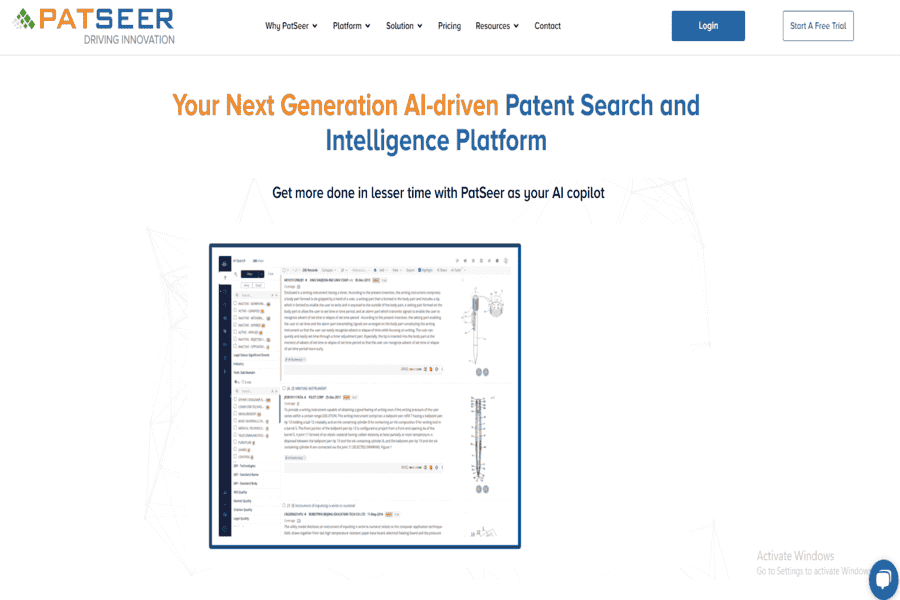
PatSeer is a patent research and analytics platform that leverages AI to help businesses perform advanced searches, visualize trends, and manage IP portfolios.
Flexible pricing based on user and feature needs.
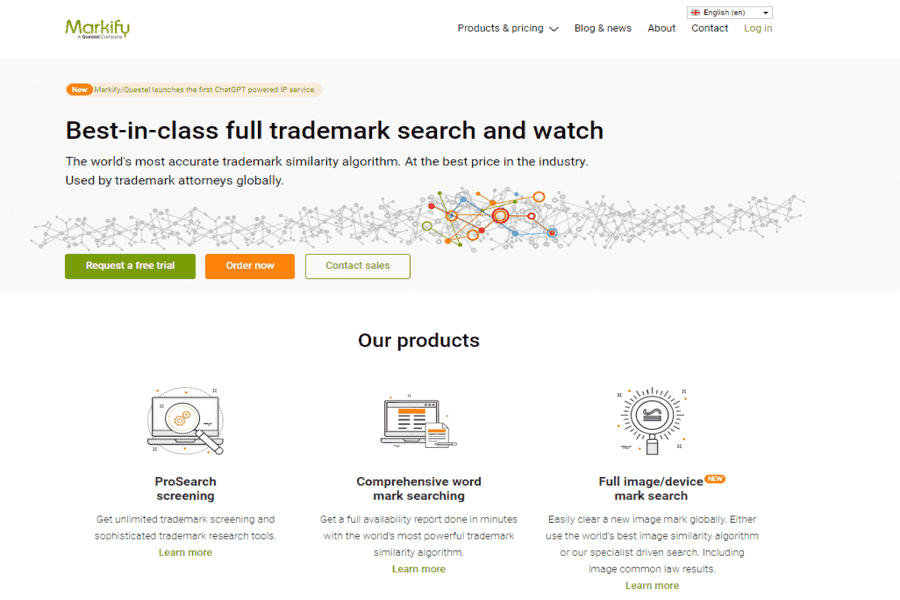
Markify uses AI to provide comprehensive trademark search and monitoring services, helping organizations avoid conflicts and protect their brands.
Subscription-based pricing; contact for details.
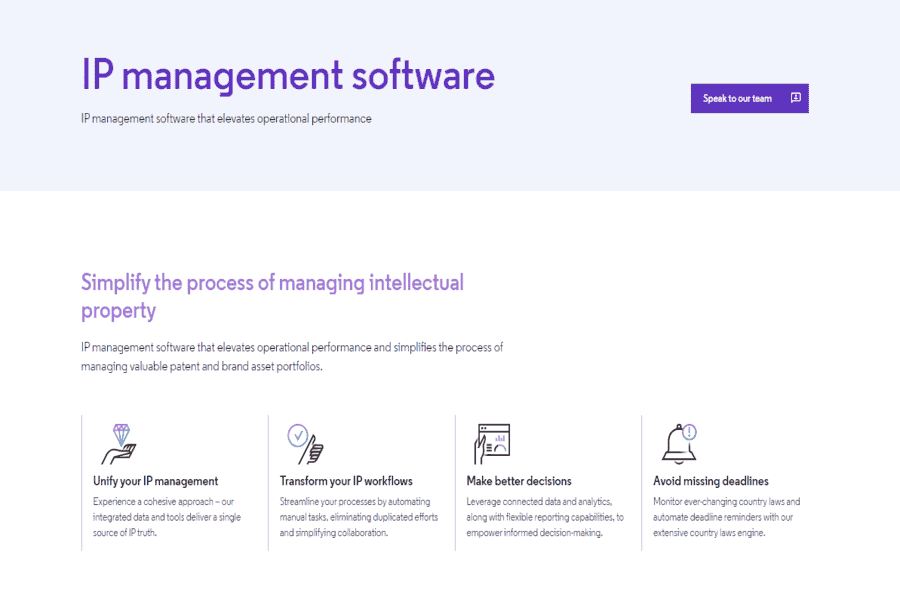
IPfolio offers AI-powered tools for managing intellectual property portfolios. Its focus is on collaboration, cost management, and strategic insights.
Custom pricing; contact for a quote.
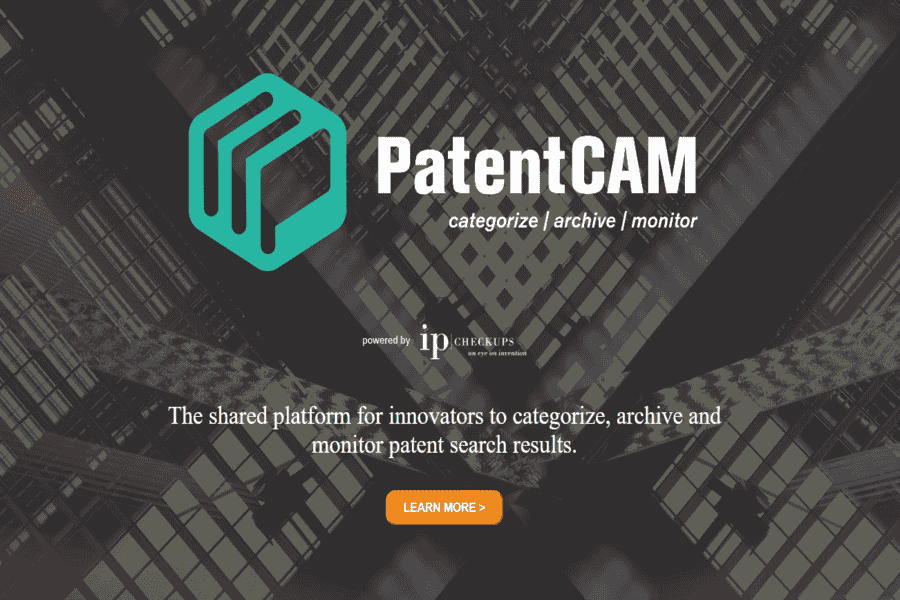
PatentCAM offers AI-based visualization and categorization tools for patent portfolios, simplifying data analysis and strategic planning.
Contact PatentCAM for pricing details.
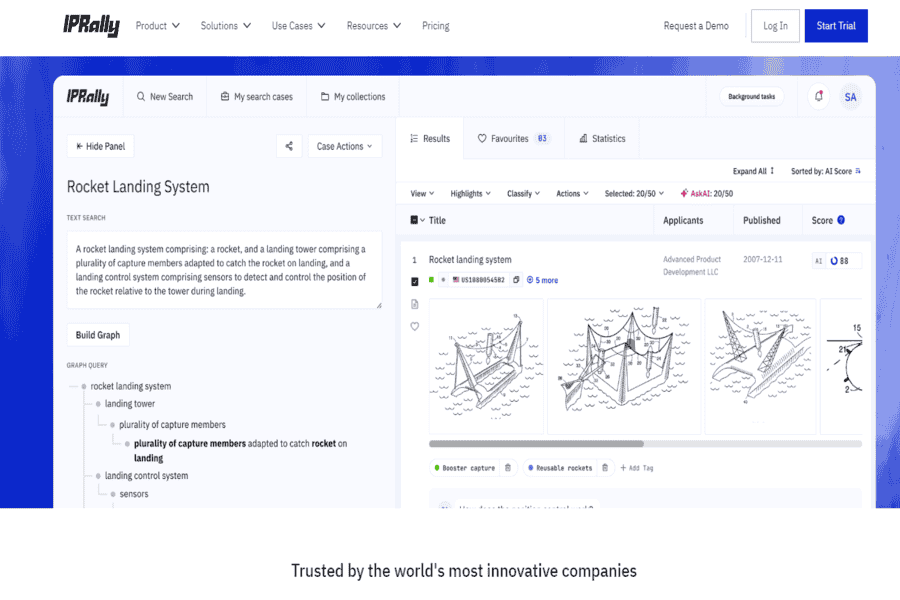
IPRally is an AI-driven patent search platform that uses graph-based technology to deliver precise and relevant search results.
Subscription-based; pricing available on request.
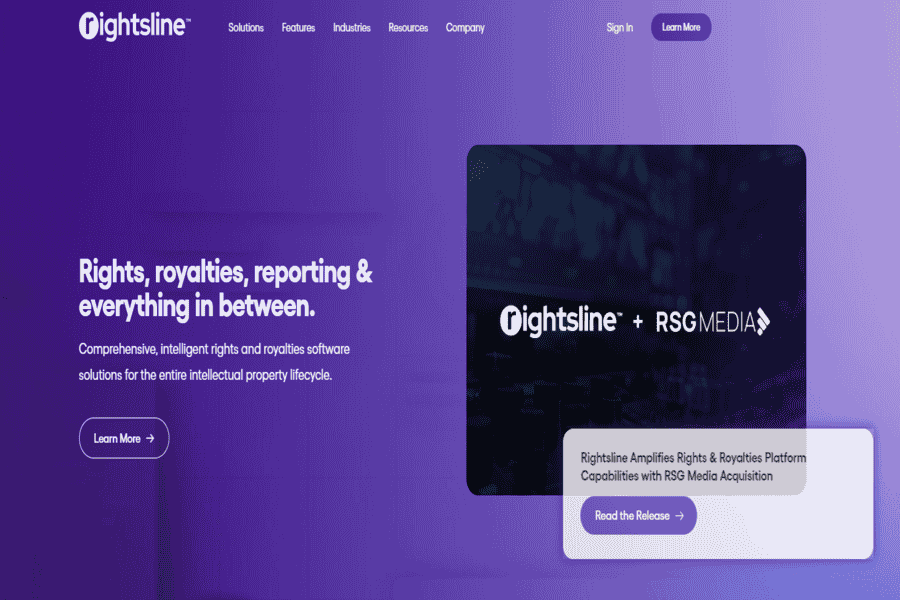
Rightsline offers IP rights and royalty management solutions, using AI to effectively track, analyze, and monetize intellectual property assets.
Custom pricing; contact Rightsline for details.
AI automates time-consuming tasks like patent searches, data analysis, and initial infringement screening. This frees up valuable human resources to focus on higher-level strategic activities, such as developing new technologies, negotiating licensing agreements, and managing IP litigation.
AI algorithms can process vast amounts of data with exceptional speed and accuracy, minimizing the risk of human error. For example, AI-powered patent search tools can more precisely identify relevant prior art than manual searches, reducing the risk of patent invalidity.
By automating routine tasks and minimizing the risk of errors, AI can significantly reduce the overall costs associated with IP management. This includes lower legal fees, reduced research costs, and minimized risks of costly litigation.
AI provides valuable data-driven insights that can inform critical IP management decisions. For example, AI-powered analytics can help businesses assess the value of their IP portfolio, identify potential risks, and optimize their IP strategies for maximum ROI.
By effectively leveraging AI, businesses can gain a significant competitive edge.
AI-powered tools help businesses identify and protect their valuable intellectual property more effectively, reducing the risk of infringement and maximizing the value of their innovations.
By streamlining the IP process, AI can help businesses introduce new products and services to the marketplace more quickly, gaining a competitive advantage.
AI can help businesses identify new opportunities for innovation by analyzing market trends, competitive landscapes, and emerging technologies.
AI models are only as good as the data they are trained on. Inaccurate, incomplete, or biased data can lead to inaccurate results, misleading predictions, and flawed decision-making.
Ensuring that training data is diverse, representative, and free from biases is crucial. This requires careful data selection, cleaning, and ongoing monitoring to identify and mitigate potential biases.
Some AI models, particularly deep learning models, are often called “black boxes” because their decision-making processes can be difficult to understand. This lack of transparency can be a significant concern in areas like IP management, where it’s crucial to understand the rationale behind decisions related to patent validity, infringement claims, and IP valuation.
Developing “explainable AI” techniques is crucial to address this challenge. XAI aims to make AI models more transparent and understandable, allowing users to understand the reasoning behind their decisions.
AI models often rely on large amounts of data, raising concerns about privacy and security. It’s essential to ensure that data is collected, used, and stored in compliance with relevant privacy regulations.
Automating tasks through AI can lead to job displacement in certain areas of IP management. It’s crucial to develop strategies for reskilling and upskilling the workforce to adapt to the changing landscape.
Concerns about the potential misuse of AI in IP management, such as the development of AI tools that could generate fraudulent patent applications or infringe on intellectual property rights, exist. To prevent this, it’s important to establish ethical guidelines and safeguards.
Blockchain technology offers a decentralized and tamper-proof ledger for recording IP ownership and transactions. This can enhance transparency, security, and efficiency in managing IP rights.
By leveraging blockchain, businesses can establish a verifiable and immutable record of IP ownership, increasing trust and authenticity in IP transactions and reducing the risk of fraud.
Blockchain can facilitate seamless and secure transfer of IP rights across borders, streamlining global IP management processes.
As AI models become more complex, the need for explainability increases. XAI techniques aim to make AI models more transparent and understandable, allowing users to understand the reasoning behind their decisions.
Explainable AI can help build trust in AI-powered IP management tools by providing clear and understandable explanations for patent validity, infringement claims, and IP valuation decisions.
XAI can enhance accountability by providing clear explanations for AI-driven decisions, making identifying and addressing potential biases or errors easier.
Deploying AI models on edge devices (like smartphones and IoT devices) can enable faster and more efficient real-time IP protection.
Edge AI can quickly detect and respond to trademark infringements, such as counterfeit products or unauthorized use of brand logos, at the point of sale or distribution.
Edge AI can quickly identify and block the distribution of copyrighted content, such as pirated movies or music, on devices and networks.
In conclusion, AI Tools for Intellectual Property Management are rapidly changing how businesses approach IP protection and utilization. By embracing these technologies, companies can unlock significant benefits, including increased efficiency, reduced costs, and improved decision-making. While challenges such as data bias and explainability need to be addressed, the future of IP management is undoubtedly intertwined with AI. As AI evolves, we expect even more innovative solutions to emerge, further empowering businesses to safeguard their intellectual assets and drive innovation.
